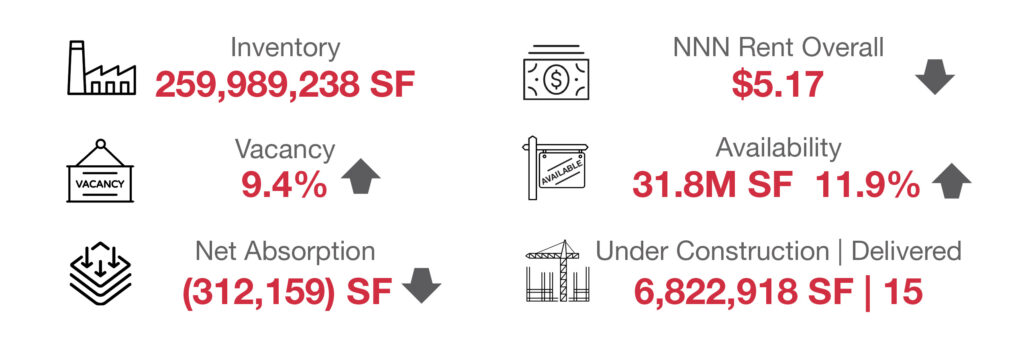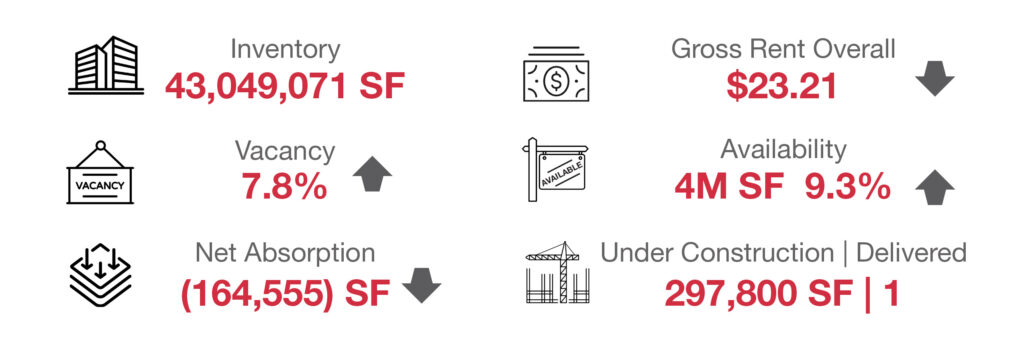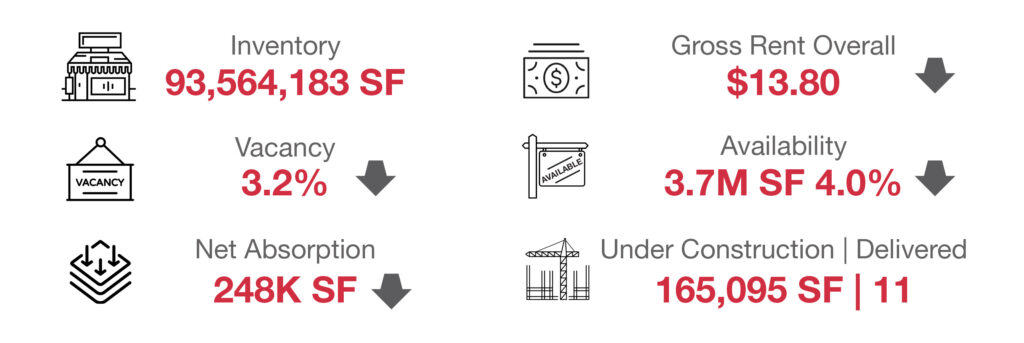Q4 2023 Market Reports
Industrial
Greenville’s industrial market thrives on the automotive industry and an advantageous location, with quick access to interstates, population centers, and ports. While growth in e-commerce and consumer spending boosted industrial real estate activity during the coronavirus pandemic, cooling consumer spending led to slowing absorption over the past few quarters, and vacancy rates are on the rise heading into early 2024. Longer-term, however, population growth along the Interstate 85 corridor, as well as strength in the automotive sector, poises Greenville and neighboring Spartanburg to benefit from major federal investments in electrification of vehicles and other high-tech manufacturing. Most recently, BMW broke ground on a $1.7 billion investment in an electric vehicle production center and an additional EV battery production facility in Woodruff.

READ FULL INDUSTRIAL REPORT HERE
Office
While the Greenville-Spartanburg area is known for its manufacturing and distribution prowess, Greenville’s urban core has earned national attention as an example of successful downtown redevelopment, which has attracted financial and professional services firms. Greenville’s strong population and employment growth over the past decade have helped South Carolina’s largest metro emerge as a notable tertiary office market. Vacancy rates remain below the national average, though elevated above pre-pandemic trends. While flat absorption has led to a bump in vacancy rates heading into 2024. Rent growth has also picked up but remains below peaks seen in 2016.

Retail
With tighter space availabilities, retail rent growth has surged to 4.3%, year over year. That’s largely a result of a cautious approach to new retail construction. Greenville’s continued population growth and downtown revitalization have led to some strip center development in the suburbs and mixed-use, adaptive reuse development near downtown and along key transportation corridors. Still, new construction starts have slowed considerably in 2023, and more than half of all new retail construction is preleased or build-to-suit.
